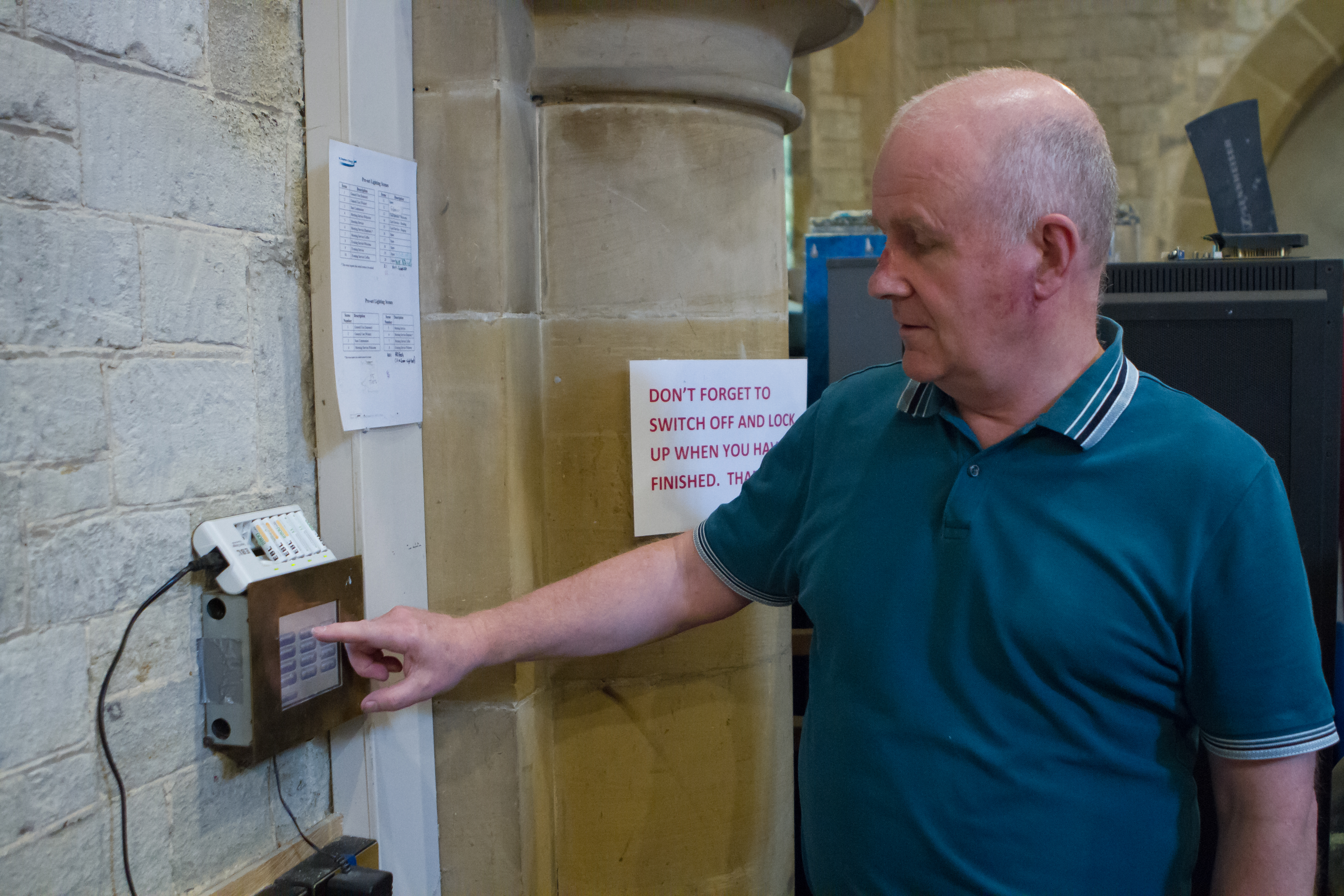
Photo: One of the new LED bulbs at St Stephen's, Tonbridge (credit: J Drew)
St Stephen’s Church in Tonbridge has saved over £2,500 on its energy bills since making the switch to LED lighting throughout the building in late 2023 – and now, St Stephen’s leadership team is planning on installing solar panels to help reach net zero carbon by 2030.
“We’re a very busy church,” says the Rev Mark Barker, who has served as the church’s vicar for the past two decades.
“We do a lot within the community and we also run a full-time pre-school in our church hall. The footfall through the building is considerable each week and the energy use is quite high.
We started to look for ways to reduce both our energy costs and our impact on the environment and began small with changing our lightbulbs in church to LED lightbulbs.”
Spiraling energy costs
St Stephen’s serves as an invaluable community hub for local people, with its building now relied upon by many for a host of different reasons.
One of the most vital roles that the building currently plays is hosting the popular Living Well Community Café that operates three days a week within the church.
The café welcomes numerous groups and local agencies through its doors as a safe place for conversation and connection, and also invites those within the local area to come in and use the space to meet with others in a welcoming environment. In addition, through a community larder, which runs alongside it, the café supports 50-60 local families weekly with their food needs.
“Opening a church on more days than just a Sunday means that we have to heat and light the building more often and have the energy in place to keep the café area going,” says Wendy Fenn, Living Well Coordinator at St Stephen’s. “These costs were really beginning to spiral for us.”

Photo credit: J Drew
Making a small change
One relatively simple change has already made a big difference to both the church’s environmental impact and monthly running costs, according to Chris Blackman, Premises Manager at St Stephen’s:
“We had been using 100 watt halogen light bulbs which generate a lot of heat and also use up a lot of energy. We then replaced them with a 16 watt LED alternative, which instantly led to a big saving: around £2,500 within the first four months of 2024 alone.”
Having been inspired by the savings achieved, St. Stephen’s is now looking ahead to making a major change on its journey to reaching net zero carbon — the installation of solar panels:
“Changing our lighting from halogen to LED is also impacting on how many solar panels we will need,” says Chris,“ so our bill for the solar panel install is now likely to drop from £120,000 to around £40,000.”
Caring for God’s creation
The purpose-driven path that St Stephen’s is currently walking proves that small actions can make a big difference; for St Stephen’s, it all began with understanding their energy usage and considering their future needs.
“Doing an energy audit first gives you something to work towards,” advises Chris. “It may give you ideas, and if you’re looking at changing LED lighting, change one bulb first and see if it works.”

Photo credit: J Drew
The motivation behind St Stephen’s proactive approach to tackling its energy use runs much deeper than saving vital funds; it is a way to actively practice the Church’s wider mission of caring for the planet, now and for the future.
“As Christians, the environment is very important to us,” says Wendy. “We need to look after this wonderful creation that God has given us. Every one of us can do a little thing.”
“We are called to be good stewards of Creation,” adds Mark. “It’s part of loving our world and loving our neighbours. We’re hoping that we can make a difference as a church, and believe that we are beginning to do so.”
The church’s mission to reduce its carbon footprint supports the Church of England’s ambitious national Net Zero by 2030 programme, which aims to reduce carbon emissions from the energy used in its churches, schools, cathedrals, houses and other buildings, saving money by improving the energy efficiency of buildings, and switching to more renewable energy sources.